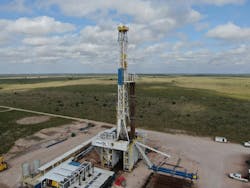Sage Geosystems Deplying Geopressured Geothermal Systems for US Army at Fort Bliss to Create Energy Resiliency
Sage Geosystems, the developer of Geopressured Geothermal Systems (GGS), will initiate a geothermal project and deploy its proprietary GGS technology to supply clean and secure energy at Fort Bliss for the US Army and the Defense Innovation Unit (DIU)
Additionally, the company will examine the potential synergies of hybrid technologies such as direct thermal use, energy storage, and dispatchable power to support cost-effective energy resilience at the base.
“We are focused on scaling our innovative GGS technology and are thrilled to have the support of the US government in showcasing the advantages of hot dry rock geothermal,” said Cindy Taff, CEO of Sage Geosystems. “Energy resilience for the US military is essential in an increasingly digital and electric world and we are pleased to help the US Army and DIU to support energy resilience at Fort Bliss.”
Sage Geosystem’s approach leverages hot dry rock, which is a more abundant geothermal resource than traditional hydrothermal (hot aquifer) formations. This technology was tested in the field in early 2022, and the results highlighted the technology's ability to deliver cost-effective and commercially viable new-generation geothermal energy.
This initiative will support the US Army Climate Strategy target of reducing greenhouse gasses by 50% by 2030, net-zero GHG emissions by 2050, and installing a microgrid on every base by 2035.
The emerging model of "geothermal anywhere" represents an opportunity for the Department of Defense to achieve energy independence and create resilient military bases across the world. Geothermal carbon-free microgrids are also scalable, safe, and dispatchable.
About the Author
EnergyTech Staff
Rod Walton is senior editor for EnergyTech.com. He has spent 17 years covering the energy industry as a newspaper and trade journalist.
Walton formerly was energy writer and business editor at the Tulsa World. Later, he spent six years covering the electricity power sector for Pennwell and Clarion Events. He joined Endeavor and EnergyTech in November 2021.
He can be reached at [email protected].
EnergyTech is focused on the mission critical and large-scale energy users and their sustainability and resiliency goals. These include the commercial and industrial sectors, as well as the military, universities, data centers and microgrids.
Many large-scale energy users such as Fortune 500 companies, and mission-critical users such as military bases, universities, healthcare facilities, public safety and data centers, shifting their energy priorities to reach net-zero carbon goals within the coming decades. These include plans for renewable energy power purchase agreements, but also on-site resiliency projects such as microgrids, combined heat and power, rooftop solar, energy storage, digitalization and building efficiency upgrades.
